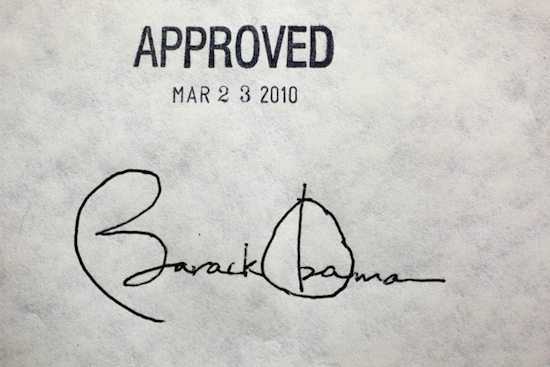The delays, extensions, revisions, and clarifications are almost as sweeping as the healthcare reform legislation itself. Last month, the White House announced the latest adjustment to the Affordable Care Act (ACA): a lengthy two-year delay to a portion of its biggest (if not most important) provision, the employer mandate.

In general, the employer mandate of the ACA is the employer equivalent of the individual mandate, which requires individuals who don't have existing or employer-sponsored coverage to buy insurance on one of the public exchanges (run by individual states or through Healthcare.Gov). Depending on income level, there are subsidies to offset the burden of the mandate, but there are also penalties to individuals for not having health insurance. In this case, the government giveth, but it most definitely has the power to taketh, as well.
Revisions, Requirements, and Wrinkles
Similarly, the employer mandate requires all employers with 50 or more employees to provide an affordable coverage option to employees or face possible penalties. No business with fewer than 50 employees will be subject to the mandate or will have to face penalties.
The most recent extension until January 2016 applies only to employers with between 50 and 99 employees. Employers with 100 or more employees will need to comply with the first extension to the mandate, now set to start in January 2015.
As if that weren't complicated enough, another wrinkle was added for employers with over 100 employees. The new revision for this group is that they will need to offer coverage to 70 percent of full-time employees in 2015 and scale up to 95 percent in 2016 or face tax penalties.
What's the Impact on Businesses?
For companies with 50 employees or less, what's the significance of all this? In short, there isn't any. The vast majority of workers, however, are employed by large or midsize businesses (i.e., over 100 employees). According to the Treasury Department, companies with 50 to 99 employees account for roughly 7 percent of the private sector work force, and businesses with 100 or more account for 66 percent.
What's the net effect of all this policy maneuvering? Obamacare is clearly here to stay. The reality (and window) of any attempts to repeal the law are unlikely, impractical, and not likely to sway anyone other than die-hard party loyalists.
Given that reality — and the fact that the mid-term elections are quickly approaching — politicians are clearly testing their talking points and messaging in advance of the fall contest. No surprise that this process conveniently coincides with this year's tax season, to boot.
Long-Term Insights
My personal view is more pedestrian and long-term. The painful statistics around our healthcare system demand change:
- National healthcare expenditures are now over $3 trillion per year (about 18 percent of our GDP).
- The US healthcare industry is an economic unit larger than Germany.
- Medical costs are the leading cause of personal bankruptcy.
- The last time the World Health Organization ranked healthcare systems by country, the US tied with Costa Rica (#37), just ahead of Slovenia.
- Medical errors are now the third leading cause of death in the US, behind heart disease and cancer.
I don't believe ACA is the solution, but it is a compelling alternative to the status quo. And, by any measure, it's clearly the first step in our long journey out of the healthcare wilderness. Middle market businesses now have some additional breathing room to adjust their implementation of this key provision.
Dan Munro is an NCMM contributor and a regular contributor for Forbes, where he writes on the intersection of healthcare IT, innovation, and policy. You can follow him on Twitter.